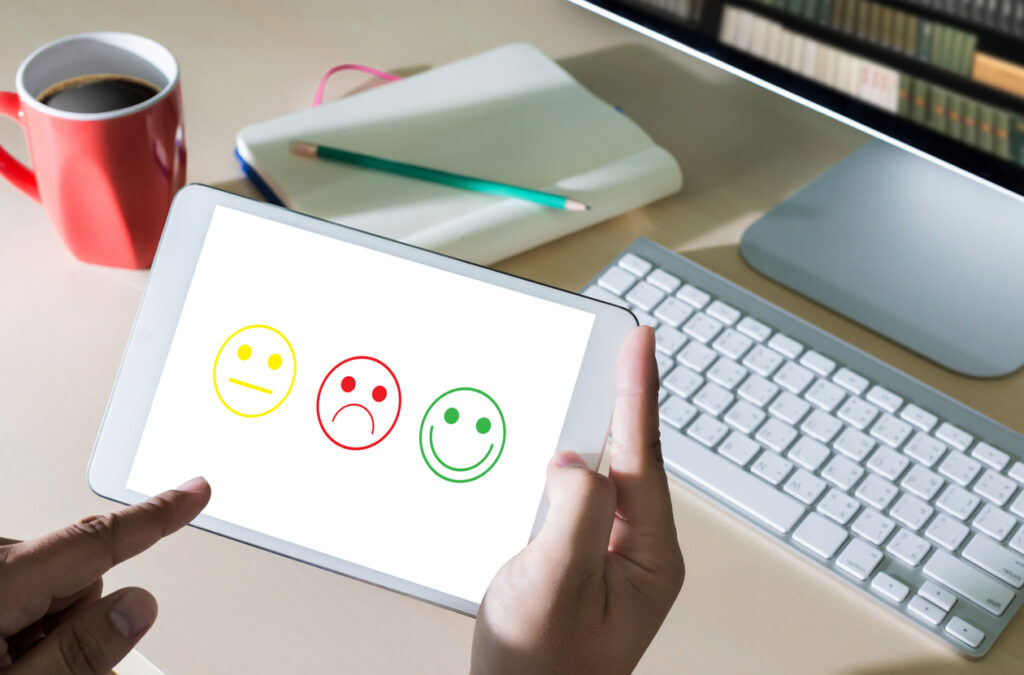Traditional people analytics methods can sometimes be flawed and therefore fail to tell you the truth. To really have an impact, HR surveys need to tap into the non-conscious part of the brain.
The phrase ‘the right tool for the right job’ is a common adage, but in relation to people analytics, in many cases, traditional methods for capturing candidate or employee data are the wrong tools for the wrong job.
How people actually feel is often quite different to what they tell you, whether that’s psychometric tests, candidate assessment forms or traditional employee engagement surveys – they don’t get at the truth.
Why? Traditional surveys, assessment and feedback tools ask you questions that engage the conscious part of the brain and, as a result, conscious bias creeps in and you can get moderated answers, which means inaccurate and inconsistent data.
Neuro survey tools and methods tap into the non-conscious part of the brain providing much more accurate insight into how an employee or candidate is actually feeling; they capture their true feelings and attitudes.
This provides a more true and accurate set of results that are relevant and meaningful, which you can address in the short, medium and long term.
With HR under pressure to navigate the needs of the business and at pace, making good decisions should start with accurate data.
There’s no point investing in people analytics if it’s the wrong data. That just means more re-work down the line and the inherent time and cost that goes with it.
Arbitrary data capture constrains what you can do
If you want to drive towards more data-driven decision-making, it makes sense to make sure you can apply the latest data analytics, machine learning and AI tools to metric data.
The challenge with traditional survey, assessment and feedback methods is the output of data is both subjective i.e. you consciously choose what to put, and arbitrary. For example, how do you know whether how ‘strongly I agree’ with a statement is the same as your perception of ‘strongly agree’?
Not only does this lead to counterintuitive and incongruent results, which in many cases make the business question the findings and ask for ‘more of the same’ analysis, but it also limits and constrains the ability to apply the latest analysis methods and critically identify any causation.
Quantitative metric-based data turbo charges your people analytics
In contrast, granular data analytics and correlation analysis is more effective because metric data (rather than a subjective ‘I agree’, for example) is created across multiple organisational groups, which, in turn, opens up new insights that simply weren’t available to businesses before.
Machine learning across data enables on-demand forecasting and validation of how consistent responses are.
Talent acquisition is less about the total number of bums on seats and more about making smarter people-based decisions.
This means it is now possible to gain a picture of the cause and effect – the relationships – between different aspects of employee engagement, employee wellbeing, performance management and cultural transformation.
Since it’s based on metric data using the latest tools, it’s a very powerful microscope through which you can look at your organisation.
Competing for the same talent demands data-driven decision making
For HR people, analytics start with attracting the right people and ends with helping that talent to flourish.
Now more than ever, with everyone fishing in the same talent pool, it’s about increasing the probability that the talent you take on can be retained and developed.
Talent acquisition is less about the total number of bums on seats and more about making smarter people-based decisions.
People analytics should be a golden thread running through every aspect of HR. It’s a ‘ need to have’ because with people analytics you can:
- Find out whether your brand is attractive to the talent you are trying to attract and shape your recruitment marketing strategy as a result.
- Understand your culture and be certain there is a great fit between candidates and employers, without which you run the risk of gong back out to the market again.
- Instill confidence that the personality traits of the candidate you are assessing are a true reflection of their personality and reflect those of other top performers.
- Gain accurate and relevant results from employee engagement and performance assessment, so that you can take meaningful action and target any subsequent investments you make in people.
Advance employee experience through emotional engagement
The foundation of great engagement is to understand people’s true feelings and attitudes.
Employee engagement should really be thought of as employee emotional engagement.
In a fast-paced digital environment where competition is intense, people analytics will become the ‘new normal’ and play an integral part in how organisations and HR functions are run.
Why is this important? From a people analytics perspective, HR can deliver to the business metric-based insights that are relevant, and will resonate at an emotional level with the employees.
You can imagine how this might drive higher engagement and greater motivation because you are fixing the right things and solving one of the core challenges of engagement.
Bringing it all together
Metric data that is accurate and captures the true feelings of candidates and employees, as well as their attitudes and personalities is essential.
It finally gives HR the ability to transform the organisation, as well as being able to respond to pivots in strategy and execute on them.
[cm_form form_id=’cm_65a14c3f5da64′]
It also gives them the tools to be able to better engage prospective candidates and existing employees alike.
In a fast-paced digital environment where competition is intense, people analytics will become the ‘new normal’ and play an integral part in how organisations and HR functions are run.
Interested in this topic? Read Predictive people analytics: how is it impacting the way we manage people?







